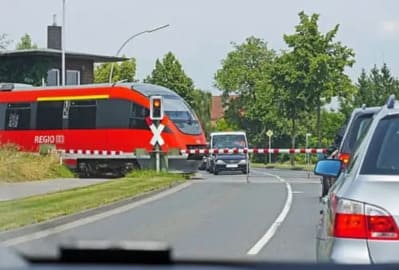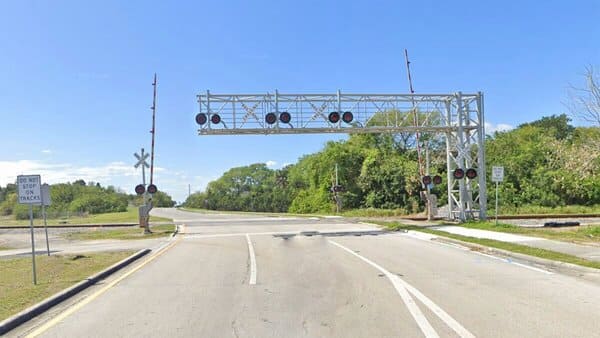what vehicles must stop at all railroad crossings
Here is what vehicles must stop at all railroad crossings answer for beginner drivers. However, if you are appearing in the Dmv test then you may face what vehicles must stop at all railroad crossings in your written test.The examiner will give you certain options and you have to select one option as your answer as below.
Question:
what vehicles must stop at all railroad crossings?
All passenger vehicles, school buses, and vehicles with explosive material must stop at all railroad crossings.
All passenger vehicles, school buses with or without children, and cargo vehicles with explosive substances or inflammable liquid must stop at all railroad crossings. The railroad crossings should always be considered dangerous and only reason not to stop is if a police officer or traffic stop signal directs traffic to proceed.

What Vehicles Must Stop at all Railroad Crossings for Safety?
In general, all vehicles must stop at railroad crossings when there trains are approaching. However, regardless of whether there are trains present or not, by law some vehicles must stop at all railway crossings. These include:
School Buses:
School buses and vehicles must stop at all railroad crossings to ensure the safety of the children.
Commercial Buses:
Public transit buses and other commercial vehicles must stop at railroad crossings for safety reasons.
Hazardous Material Transport Vehicles:
The chemical transporting or flammable substances vehicles must stop at all railroad crossings to reduce the danger of accidents.
Summary of what vehicles must stop at all railroad crossings:
According to Federal Railroad Administration USA, passenger, school, and cargo vehicles with explosive material must stop at all railroad crossings. Whether these vehicles are with passengers or without passengers and loaded or empty. The railroad crossings should always be considered dangerous and these vehicles have to stop at all uncontrolled railroad crossings. More importantly, these vehicles must stop within fifty feet but not less than fifteen feet from all railroad crossings.
The different jurisdictions may have different rules about what vehicles must stop at all railroad crossings. The most precise and recent information can be found by consulting the local traffic legislation in your area. The most precise and recent information can be found by consulting the local traffic statutes and legislation in your area.
Improve Your Road Signs Knowledge, Take a Free Road Signs Knowledge Test.

Similar Questions Frequently Asked in Dmv Test
The majority of collisions at railroad crossings are the result of:
At intersections, crosswalks, and railroad crossings, you should always:
At railroad crossings who has the right of way?
A flashing red light at a railroad crossing means
This question appeared in the following DMV Tests.

